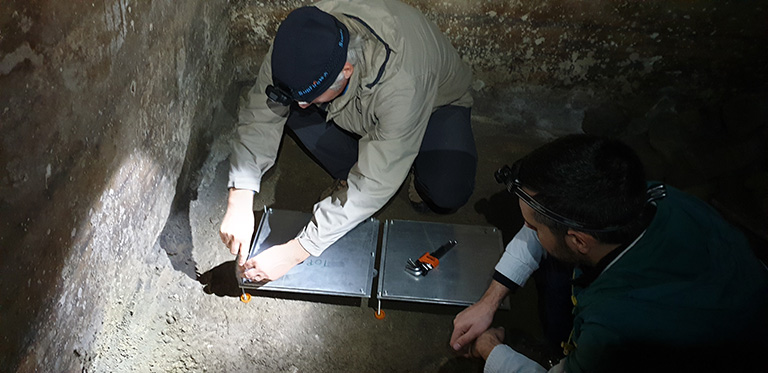
There is a hidden and physically unreachable treasure in the ground under Naples. We are speaking of the ruins of the ancient necropolis of Neapolis built by the Greeks in the late 4th and early 3rd centuries B.C., the remains of which are now approx. 10 metres below the present street level, in the Sanità district. Unfortunately, the very high population density and urban characteristics of the area make it very difficult to proceed with systematic excavations, but the archaeological research carried out, which had also led to the discovery of the Ipogeo dei Togati and the Ipogeo dei Melograni, led researchers to speculate on the presence of additional unknown monuments. How can this underground archaeological heritage be studied without being accessible? The answer to this question stems from an alliance between seemingly distant disciplines: particle physics and archaeology, and it comes from a non-invasive technique called muon radiography, which is particularly suitable in urban environments where it is unthinkable to apply active survey methods such as drilling or seismic waves.
A team of researchers from the University of Naples Federico II and INFN, in collaboration with Nagoya University, used muon radiography to inspect the presence of possible underground cavities in the Sanità district of Naples and identified the presence of an underground burial chamber while also defining its three-dimensional position. The research has been published in the Scientific Reports of Nature journal. (https://www.nature.com/articles/s41598-023-32626-0).
The muon radiography or muography is a technique that uses muons, particles that are produced when cosmic rays from space interact with the terrestrial atmosphere, to reconstruct an image of an object's internal structure. The principle is similar to that of X-rays, with the advantage of being able to investigate much larger objects farther away from the point of observation because of the greater penetration capacity of muons compared to X-rays.
The first challenge was to devise a compact muon detector with high angular resolution, transportable in a cramped place with no access to the power grid. The detector developed is based on technologies used in subnuclear physics experiments at CERN, and at INFN's Gran Sasso National Laboratories, which study the properties of neutrinos and search for dark matter.
The muons produced in the interaction of cosmic rays with the atmosphere penetrate the buildings and rock below and can pass through it to the detectors. However, depending on the density and thickness of the rock passed through, some of these muons are absorbed. From the number of muons arriving on the detector from the different directions, it is possible to estimate the density of the material they passed through. Thus an excess was found in the data that can only be explained by the presence of a new chamber.
Two muon detectors, consisting of films of nuclear emulsions, special photographic plates that make it possible to "photograph" the passage of particles through them with great precision, recording their trajectories, were used to carry out the investigation. The detectors were placed approx. 18 metres below street level, 2 metres apart, in an old cellar, used in the 19th century to store food. The instruments collected data for approx. one month, capturing approx. 10 million muons, thanks to which it was possible to reconstruct a stereoscopic view of the layers above, defining the three-dimensional position of the new burial chamber




